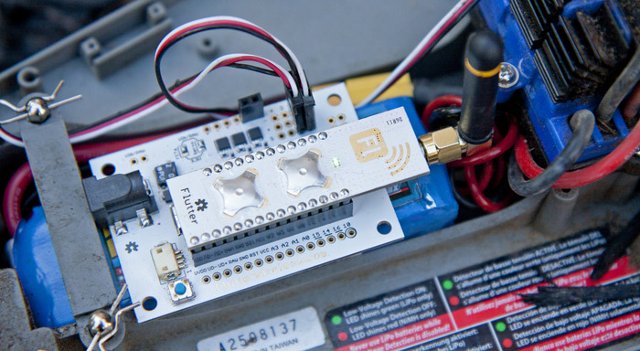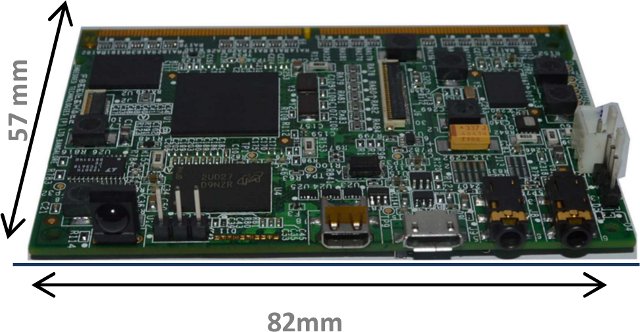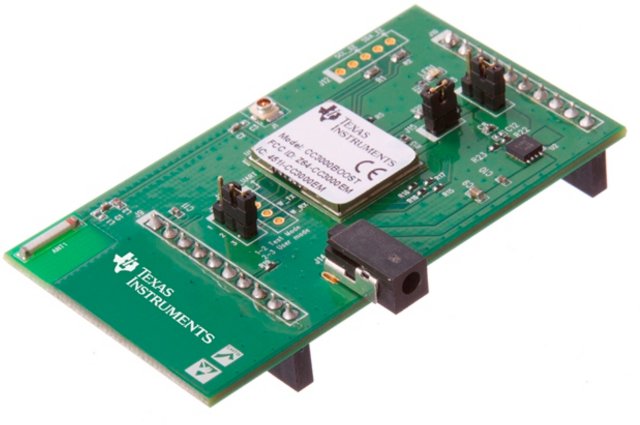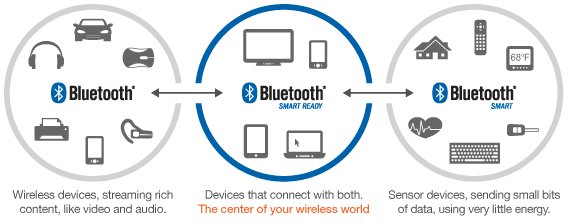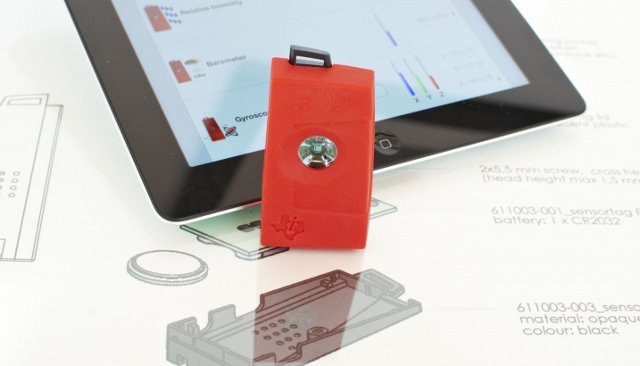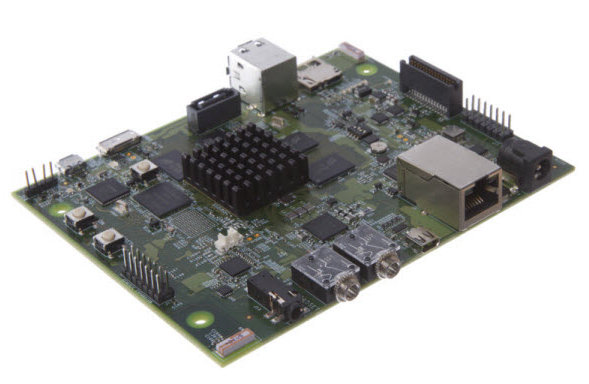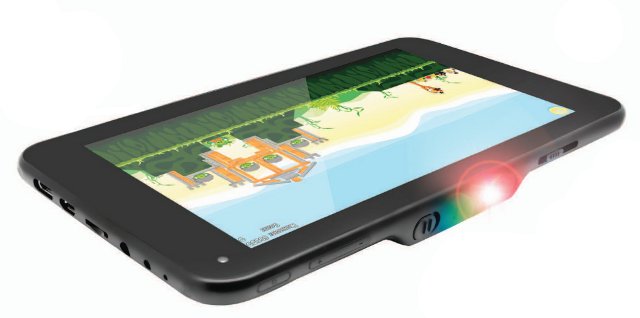There are already several ways to add wireless connectivity to your hardware project. For short ranges, we can use protocols such as Bluetooth (e.g. RFDuino, BLEDuino projects, or Bluetooth USB dongle), for much longer ranges 3G/4G connectivity may be required, and achievable via a 3G/4G USB dongle, or SparqEE CELLv1.0 project for example. But what if you want something in the middle with a range closer to 1km? Flutter boards using the 915MHz band (US only) can provide such range, and are software compatible with the Arduino. There are two version of the board: Flutter Basic – Board with an low-profile integrated antenna. It features micro USB for power, an LED, and a button, as well as several digital and analog I/O. Flutter Pro – Board with external antenna (and probably longer range). It comes with all features found in Flutter Basic, and adds battery charging, an additional button, and […]
Texas Instruments Releases Android App for SensorTag and Publishes Bluetooth Low Energy Training Videos
Texas Instruments Sensortag is a Bluetooth Low Energy (BLE) development kit with 6 sensors (IR temperature, humidity, pressure, accelerometer, gyroscope, magnetometer) mainly destined at mobile application, which I recently tried in Linux. Until now, only it was only officially supported in iOS and Windows, but a few days after the release of Android 4.3 which adds Bluetooth Low Energy support, Texas Instruments quickly worked to release an Android App for their BLE devkit. The annoying part is that the Android app is only available as a Windows executable (SensorTagAndroidApp-0_9_0-windows-installer_2.exe), so you’ll have not choice but to use Windows to uncompress the files. Yet the installation goes as follows: Copy the SensorTag.apk file (SensorTag_0_9_0.apk) to your Android 4.3 device Enable installation of apps from unknown sources (Settings -> Security -> Device Administration -> Unknown Sources) Open file manager and launch, locate the .apk file and install the app by clicking the […]
FossilShale FS-DM385-SOM Features TI DaVinci SoC for HD Media applications
FossilShale, an embedded company based in Bangalore, has announced a system-on-module based on Texas Instruments Davinci TMS320DM385 SoC that targets applications high-definition decoding and encoding (up to 1080p60) such as IP Cameras, HD video conferencing endpoints, digital signage, portable medical imaging and diagnostics, or camcorders. It can be used standalone for evaluation, or with a carrier board. FS-DM385-SOM Specifications: SoC – Texas Instruments TMS320DM385F ARM Cortex A8 core @ 1GHz with HDVICP v2 video core handling H.264 BP/MP/HP, MPEG2, VC1, MPEG4 SP/ASP, JPEG/MJPEG encoding and decoding. Memory – 1GB DDR3 Storage – 512MB NAND flash +1x Micro SD/MMC connector (up to 32GB) Audio / Video: 1x HDMI Out (Micro) 1x LCD TFT Interface (24 Bit RGB) 1x Camera Interface (MIPI) 1x Integrated Composite Video In & Audio Line In(Stereo Jack) 1x Integrated Composite Video Out & Audio Line Out(Stereo Jack) Other Interfaces: 1x USB OTG 1x IrDA Accelerometer 1x I2C, 1x SPI […]
Texas Instruments Introduces SimpleLink Wi-Fi CC3000 BoosterPack
Texas Instrument launched SimpleLink Wi-Fi CC3000 in Q1 2012 in order to bring WiFi connectivity to any device including 8-bit or 16-bit MCU, as CC3300 internally handled all networking tasks, and exchange data with the MCU via an SPI interface. This Wi-Fi processor allows to use Wi-Fi for data transmission for the Internet of Things, and offers much better battery than other system relying on software to handle network traffic. Today, the company has just announced SimpleLink Wi-Fi CC3000 BoosterPack, a low cost evaluation platform that works with both MSP430 and Tiva C Series LaunchPad evaluation kits, and sells for $35. SimpleLink Wi-Fi CC3000 BoosterPack features and benefits as seen in the press release: SmartConfig technology: One-step Wi-Fi configuration using smartphones, tablets or PCs Easy network setup for display-less (headless) devices Simultaneous multiple device provisioning iOS, Android and Java sample applications available Royalty-free software Flexible memory size – Small memory foot print […]
Bluetooth Versions Walkthrough, and Bluetooth 4.0 Low Energy Development Resources
I’ve seen more and more Bluetooth 4.0 LE devices in the last few months including RFDuino, Wimoto Motes, TI SensorTag, and Scadanu Scout, so I thought it would be good to write a bit about Bluetooth. First, I’ll write about the different version of Bluetooth, since I was still confused with the practical implications between the versions, and then I’ll show some development kits and software resources to play around and/or develop Bluetooth 4.0 LE applications both on devices and hosts. Bluetooth Versions Bluetooth v1.0 and v1.0B The Bluetooth 1.0 Specification was released in 1999, and according to an entry in Wikipedia, 1.0 and 1.0B devices had many issues, mainly interoperability issues. You won’t find any Bluetooth 1.0 device today. Bluetooth v1.1 Bluetooth v1.1 was ratified as IEEE Standard 802.15.1-2002 in 2002. It fixed many issues found in the previous specifications, added the option to use non-encrypted channels, as well […]
$25 Texas Instruments SensorTag is a Bluetooth LE Devkit with 6 Sensors
Yesterday, I wrote about Wimoto Motes, tiny Bluetooth LE devices with several sensors that can be controlled and monitored via an iOS app, and soon by an Android app, as well as Linux devices. Each mote costs $39 plus shipping, and one commenter mentioned the price may be a bit too high. A Google search for “bluetooth sensor” immediately brings TI SensorTag, which looks somewhat similar, except it is a Bluetooth LE development kit, includes 6 sensors (but no light sensor), and only costs $25 including shipping. SensorTag Specifications: Bluetooth 4.0 low energy (CC2541) SoC 6 sensors connected via I2C: IR Temperature sensor (TI TMP006) Humidity sensor (Sensirion SHT21) Pressure sensor (Epcos T5400) Accelerometer (Kionix KXTJ9) Gyroscope (InvenSense IMU-3000) Magnetometer (Freescale MAG3110) Power – Single cell coin cell battery (CR2032), quiescent current consumption of 8uA, allowing years of battery life. FCC, IC and ETSI certified solution Dimension – 71.2x36x15.5 mm, […]
$329 Texas Instruments OMAP5432 EVM / Development Board
Earlier this month, Texas Instruments has apparently discreetly, not to say surreptitiously, launched their OMAP5432 evaluation module. Beside the dual Cortex A15, dual Cortex M4 OMAP5 SoC, the board comes with 2GB RAM, a 4GB eMMC module, USB 3.0, SATA and more. OMAP5432 EVM Specifications: SoC – Texas Instruments OMAP5432 Multicore ARM Cortex A15/M4 processor with PowerVR SGX544MP2 GPU System Memory – 2GB DDR3L (implemented using 4x Micron 4Gb DDR3L devices (MT41K256M16HA-125:E) Storage – 4GB EMMC/iNAND Ultra device + SD/MMC 4-bit Micro-SD card cage Display / Video: HDMI via native OMAP HDMI interface DSI Display Expansion (DSIPORTA and DSIPORTC) via 100-pin expansion connector Parallel Display Expansion (DPI) via 100-pin expansion connector Audio – Audio Jack 3.5mm, Stereo out & in, Headset Jack (earphone/microphone) USB – 3x USB HS 2.0 (2 via USB connector, one via 0.1″ header), 1x USB 3.0, and 1x USB OTG 2.0/3.0 Connectivity – 10/100 802.3u Ethernet. […]
Promate LumiTab Android Tablet Features a DLP Pico-Projector
Back in 2011 & 2012, we saw some Android products with a pico-projector, including a lightbulb running Android, but pico-projectors never really seemed to be embedded into consumers products. Promate, however, decided to add one of those to one of their Android tablets. Promate Lumitab would just be a typical Android 4.2 tablet with a 7″ touchscreen, a dual core processor (OMAP4460), 1GB RAM, 16GB flash, if it did not also come with a DLP pico-projector capable of outputting an image up to 100″ (254 cm). Promate Lumitab Specifications: SoC – TI OMAP4460 Dual-core ARM Cortex-A9 @ 1.5GHz + PowerVR SGX540 GPU System Memory – 1GB LPDDRII RAM Storage – 16GB flash, and a microSD slot Display – 7-inch IPS display (1024×600) Video Output mini HDMI Pico-projector DLP technology 854×480 (WVGA) resolution. 35 Lumens, Projection size of more than 100 inches, and projection ratioof 1.5 Audio I/O – 3.5mm stereo […]


